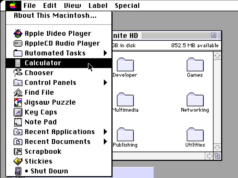
Stories about a band of tech-savvy thieves in L.A. breaching homes with smart security dotted the news this month. There are a number of ways to harden your smart security system (notably, hardwire it, if you can), but the reality is that even the best security system only works when paired with real-world practices. Note that these are actions are ones anyone can take–you don’t need a smart home.
Put electronic trackers in your valuables
AirTags are going to be hard to attach to small items like jewelry or that prized baseball, but if you can hide a tracking device like an AirTag, you should, according to the LAPD. AirTags aren’t the only option—Tile produces similar products, and there is the whole world of NFC tags, which have less range but can be used in similar ways as AirTags for tracking and require no batteries.
Apple AirTag 4 Pack: $79.99
Tile Mate Essentials 4-Pack: $79.88
Set of 50 NFC tags: $9.99
Make it harder to break in
Everyone who has ever locked themselves out of an apartment with a sliding glass door can tell you that there is no way to beat a metal bar lodged into the slide on the inside—simple but uncrackable. Similar physical barriers, like locking bars on windows, gates, railings and fencing all provide another layer of prevention. They don’t make it impossible to break in; they just make it harder. That can translate to it taking longer to break in, or causing more noise, giving you and neighbors more opportunity to notice.
Sliding door security bar: $19.99
Window security bar: $19.99
Stop telling everyone everything
You think you’ve just posted an envy-inspiring pic of you on a plane to paradise, but what you’ve really done is let the world know you’re not going to be home for a few days. When you post socially in real time, you’re creating a security risk. Following her famous Paris robbery, even Kim Kardashian stopped posting in real time, and started removing her location, stating, “people really knew my every move, they knew what I had, they knew where I was, what I was doing.” Consider making use of tools on social media that limit who sees your posts and keeping it to a circle of trusted real world friends, or better yet, backdating posts. Post about your vacation once you’re home again.
Use smart tech
Let’s say your smart security system is a collection of smart cameras, indoor window and door sensors and smart locks. You can include some additional security in the form of sensors, lights and other smart outdoor devices. Link a motion sensor to your sprinklers. Use a presence sensor along the side of your house to detect people, not motion, and then set an alarm or lights to go off when it gets a hit. In fact, motion-activated lights should be an essential part of your home security plan. You can add a layer of protection to these systems by adding a padlock to your outdoor circuit breaker.
Motion detection sprinkler: $75.99
Presence sensor: $82.99
Ring smart pathlights: $139.99
A multi-pronged method of prevention is your best bet
All of these methods aren’t perfect solutions; they’re just adding layers of protection. Altogether, each step makes it just a smidge harder for someone to break in, but your home is not the White House, so if someone wants to get in and they have the skills, they likely will. For that reason, it’s also a great idea to have documented what is in your home, for insurance purposes.








